 1999 Lancia Lybra SW (839) Dimensions, Size & Specs
1999 Lancia Lybra SW (839) Dimensions, Size & SpecsMeasurements of the 1999 Lancia Lybra SW, engineered for optimal performance and comfort
| Dimensions | |
|---|---|
| Length: | 4466 mm175.8 in14.7 ft |
| Width: | 1743 mm68.6 in5.7 ft |
| Height: | 1462-1470 mm57.6-57.9 in4.8-4.8 ft |
| Trunk Capacity: | 420-1300 liter14.8-45.9 cu ft |
| Trunk Capacity (Max): | 1300 liter45.9 cu ft |
| Weight Specifications | |
| Curb Weight: | 1275-1460 kg2811-3219 lbs |
| Maximal permitted Weight: | 1815-1945 kg4001-4288 lbs |
| Tire Specifications | |
| Rims Size: | 15-inch rims:
|
| Tire Sizes: |
|
The Lancia Lybra SW (839) is a versatile station wagon that was produced from 1999 to 2005, blending Italian design flair with practical functionality. Measuring 4466 mm (175.9 inches) in length, 1743 mm (68.6 inches) in width, and standing between 1462 mm to 1470 mm (57.5 to 57.9 inches) tall, the Lybra SW offers a balanced size ideal for family and daily use. Its curb weight ranges from 1275 kg to 1460 kg (2811 to 3219 lbs), providing solid road presence without compromising maneuverability. The maximum weight capacity varies between 1815 kg and 1945 kg (4004 to 4288 lbs), enabling the station wagon to accommodate passengers and cargo efficiently.
One of the standout features of the Lybra SW is its generous luggage capacity. With rear seats upright, it provides 420 liters (14.8 cubic feet) of cargo space, which expands to an impressive 1300 liters (45.9 cubic feet) when the rear seats are folded down, making it suitable for extensive luggage, sports equipment, or bulky items. The car rides on 15-inch rims (6J x 15) fitted with tires sized 195/65R15, 205/60R15V, or similar, balancing comfort and road grip effectively.
The Lancia Lybra SW (839) exemplifies a practical yet stylish station wagon option from the late 1990s and early 2000s segment, perfectly suited for those seeking a medium-sized estate with flexible cargo space and reliable performance.
Discover the standout features that make the 1999 Lancia Lybra SW a leader in its class
Have a question? Please check our knowledgebase first.
The Lancia Lybra SW (839) station wagon measures 4466 mm (175.8 inches) in length, 1743 mm (68.6 inches) in width, and ranges between 1462 mm to 1470 mm (57.5 to 57.9 inches) in height. These dimensions provide a compact yet spacious profile typical of late 1990s to early 2000s station wagons, blending a balanced footprint for urban maneuverability with adequate interior space for passengers and cargo. The height variation is often due to suspension settings or trim differences. This size allows for comfortable accommodation of passengers while maintaining a practical size for everyday use.
The curb weight of the Lancia Lybra SW ranges between 1275 kg to 1460 kg (approximately 2810 lbs to 3219 lbs), depending on the variant and equipment level. The maximum permissible weight—also referred to as gross vehicle weight rating (GVWR)—is between 1815 kg and 1945 kg (around 4005 lbs to 4289 lbs). This means the vehicle can safely carry an additional load of passengers and cargo up to this limit. These weight figures strike a balance between structural robustness and efficiency, typical for a station wagon designed for comfortable family and utility use.
The Lancia Lybra SW offers a versatile luggage capacity starting at 420 liters (about 14.8 cubic feet) when the rear seats are upright, allowing enough space for typical grocery runs or weekend bags. When the rear seats are folded down, the capacity significantly increases to a maximum of 1300 liters (approximately 45.9 cubic feet), making it extremely practical for transporting larger items or more luggage. This expandability highlights the Lybra SW's design focus on utility, catering effectively to families or users who need occasional extra cargo space.
Yes, the Lancia Lybra SW comfortably fits into a standard residential garage. Standard garages generally have a width of around 2400 mm (about 7.9 feet) and a depth of 5400 mm (roughly 17.7 feet). Given the Lybra SW’s width of 1743 mm (68.6 inches) and length of 4466 mm (175.8 inches), the car leaves sufficient clearance for opening doors and maneuvering inside a standard garage space. The height of up to 1470 mm (57.9 inches) also poses no issues for typical garage ceiling heights, which often exceed 2100 mm (82.6 inches). Therefore, owners can expect hassle-free parking in standard residential garages.
The Lancia Lybra SW replaced the earlier Lancia Dedra and represents a modernization in size and design. Compared to the Dedra station wagon, which was shorter and narrower, the Lybra SW is longer at 4466 mm compared to Dedra’s approximate length of 4350 mm, and wider at 1743 mm versus Dedra's width near 1700 mm. This increase in size provides enhanced interior volume and comfort, particularly beneficial for rear passengers and cargo room. Additionally, the more contemporary styling and improved aerodynamics differentiate the Lybra SW from its predecessors, offering a refined driving experience alongside practical improvements.
In comparison to similar station wagons from the late 1990s and early 2000s, such as the Audi A4 Avant or Volvo V40, the Lancia Lybra SW sits comfortably in the mid-size category. For instance, the Audi A4 Avant measured approximately 4500 mm in length, slightly longer than the Lybra, while the Volvo V40 was shorter, around 4300 mm. The Lybra’s luggage capacity with seats up (420 liters) and folded (up to 1300 liters) is competitive and similar to peers, offering practical versatility. While not the largest or most spacious wagon of that time, the Lybra combined Italian styling with practical size, appealing to buyers who preferred a slightly more compact yet well-equipped wagon.
The Lancia Lybra SW is equipped with rims sized 6J x 15 inches and compatible tire sizes include 195/65R15, 205/60R15V, and 195/60R15, depending on the trim and configuration. The 15-inch rims paired with these tire sizes are typical for station wagons of the era, striking a balance between ride comfort and handling. The relatively narrow tire widths help in reducing rolling resistance and improving fuel economy, while the sidewall height in these tire profiles contributes to a cushioned ride quality. The tire and rim setup suits everyday driving, offering good stability and grip without compromising ride comfort.
The Lancia Lybra SW’s height ranges from 1462 mm to 1470 mm (57.5 to 57.9 inches), which is relatively low for a station wagon. This relatively low profile offers benefits in lowering aerodynamic drag, which can improve fuel efficiency and reduce wind noise at higher speeds. Inside, the height is designed to provide adequate headroom for average-sized passengers, though taller occupants might find the rear headroom a little tight due to the sloping rear design typical of sportier wagons. Thus, the height strikes a compromise between sporty styling and practical interior space.
The curb weight of the Lancia Lybra SW ranges from 1275 kg (2810 lbs) to 1460 kg (3219 lbs) depending on factors like engine type, trim level, and optional equipment. Lighter models provide advantages in acceleration and handling responsiveness, as there is less mass to move and control. Conversely, heavier equipped versions tend to offer more features or higher safety content, which add weight but improve comfort and protection. Heavier weight can marginally reduce fuel efficiency and increase braking distances; however, the Lybra SW maintains a competitive balance typical of mid-size station wagons of its time, providing a satisfactory combination of performance and economy.
The Lancia Lybra SW (839) was produced from 1999 to 2005 as a stylish and practical station wagon blending Italian design flair with functional utility. It featured a comfortable and well-appointed interior, multiple engine choices including petrol and diesel variants, and a suspension setup aimed at ride comfort combined with confident handling. Its luggage capacity made it a versatile family car, while build quality and finish were positioned as premium for the segment. The Lybra was appreciated for its unique styling compared to mainstream wagons, though it remained somewhat niche in markets outside Italy. The model also offered respectable safety features and refined driving dynamics, making it a notable contender in the European mid-size station wagon market during its era.
Discover similar sized cars.
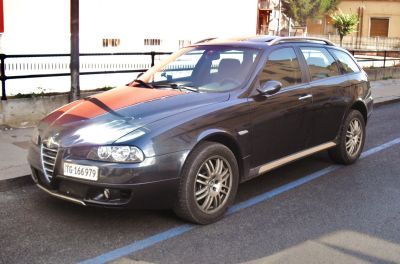
| Production: | 2004-2007 |
|---|---|
| Model Year: | 2004 |
| Length: | 4441 mm174.8 in |
| Width: | 1743 mm68.6 in |
| Height: | 1458 mm57.4 in |
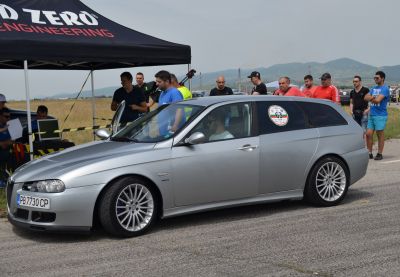
| Production: | 2003-2006 |
|---|---|
| Model Year: | 2003 |
| Length: | 4441 mm174.8 in |
| Width: | 1743 mm68.6 in |
| Height: | 1430-1458 mm56.3-57.4 in |
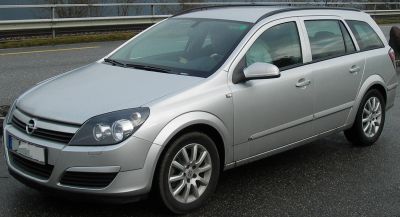
| Production: | 2004-2006 |
|---|---|
| Model Year: | 2005 |
| Length: | 4515 mm177.8 in |
| Width: | 1794 mm70.6 in |
| Height: | 1500 mm59.1 in |
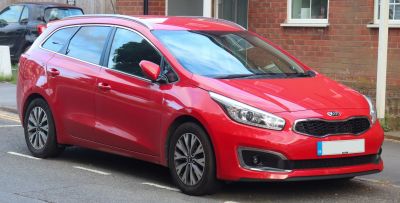
| Production: | 2015-2018 |
|---|---|
| Model Year: | 2015 |
| Length: | 4505 mm177.4 in |
| Width: | 2035 mm80.1 in |
| Height: | 1485 mm58.5 in |
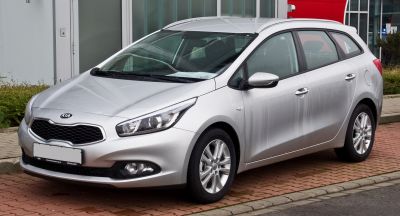
| Production: | 2012-2015 |
|---|---|
| Model Year: | 2012 |
| Length: | 4505 mm177.4 in |
| Width: | 2045 mm80.5 in |
| Height: | 1485 mm58.5 in |
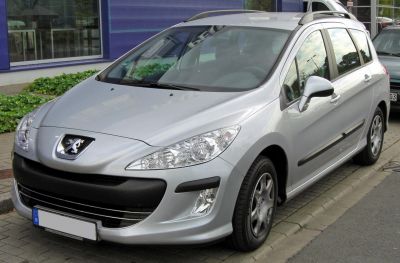
| Production: | 2008-2011 |
|---|---|
| Model Year: | 2008 |
| Length: | 4500 mm177.2 in |
| Width: | 2038 mm80.2 in |
| Height: | 1496-1564 mm58.9-61.6 in |

| Model Year: | 2015 |
|---|---|
| Length: | 4485 mm176.6 in |
| Width: | 1780 mm70.1 in |
| Height: | 1500 mm59.1 in |

| Model Year: | 2012 |
|---|---|
| Length: | 4485 mm176.6 in |
| Width: | 1780 mm70.1 in |
| Height: | 1500 mm59.1 in |
